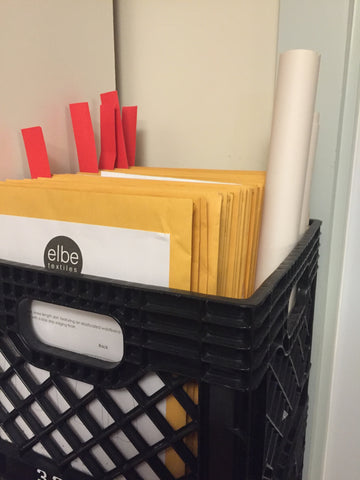How I Manage my Printed Sewing Pattern Collection
Share
Hi and welcome to Sew Not Complicated (and to my very first blog post)!
I love sewing patterns! When I discovered that there were other patterns out there beside the big 4 from the chain store, I was over the moon! So many choices. Books, pdf, printed patterns...I collected quite a few over the years. Not a lot as per several sewists, but enough to have to find a way not get overwhelmed by them. I would say that my personal collection currently has approximately 150 patterns, printed and envelopes. That excludes books and patterns on my computer that I haven't got to.
I prefer printed patterns for the convenience of having all that you need in a neat little package. Packages from some indie sewing pattern companies are also very pretty. No need for printing, cutting, taping...However, some patterns are only available as pdf. I also have to admit that the instant gratification of getting a pdf is sometimes just what I need.

No matter the format, I usually trace my patterns. I like to keep the original safe for future use - there is no way I am going to reprint, recut, retape or buy again because it was too small the first time!! Tracing feels like a hassle for a lot of people (especially if you have to print, cut, and tape it together before), but I like that part of the process. It allows me to familiarize myself with the pattern pieces and all the details (notches, darts, lengthen/shorten line, etc.). While tracing I usually integrate the adjustments I think I will need at the same time...inevitably shortening everything! I use tracing paper that comes in large rolls (medical paper). I also like freezer paper for small pieces that get a lot of use, but you can’t see through it very well for tracing.
Did you know that you can stick your freezer paper onto your fabric by ironing it on at low temperature? You can easily peel it off when you are done cutting. It is great for fabrics that are a little harder to work with. I use freezer paper for stenciling on fabric too.
You can also iron your pattern pieces (tracing paper or tissue paper) before using them to mark and cut your fabric. That way, you remove any wrinkles caused by the folding and storage. The more precise you are when cutting the pattern, the more chance you have of everything fitting together as intended.

I read a lot of blog posts from other sewists explaining their organization and a lot of them recommend some sort of digital tools to read instructions and add notes...If it works for them, it's great! Call me low tech, but I can't work with digital instructions for pdf patterns. I need a hard copy that I can write on.
For pdf patterns, I like to print the instructions as a booklet. I arrange the sheets in the proper order, fold in half like a book and sew right in the middle. It uses a little less paper and it feels like a little book.


For printed patterns, the original pattern pieces, instructions, traced pattern pieces, etc. don't necessarily fit back into the original envelope when I am done. For pdf patterns that I printed, I also need a place to store them. To keep everything together I like to use large envelopes (10 x 13 inches works well). I can fit the original pattern, instructions, notes I took, etc. I print out or photocopy the cover of the pattern and glue it to the front of the envelope for an easy visual. I sometimes also include a copy of the back of the envelope with all the measurements for quick reference.

All the large envelopes then go together in a box (plastic crate works great, but a box of apple sauce will do as well, nothing fancy as you can see in the picture below), more or less organized by categories…My system is not perfect yet, but it looks clean and all the envelopes are the same size. I am not a neat freak by any means, but I like to have a somewhat organized place to get creative.


With so many patterns, hacks and ideas, it is hard to remember all the details of every sewing projects. I keep track of what I sew and the details in a small book. I am not the scrapbooking type of person; it is more my engineering training that taught me the value of taking notes. Very simple: pattern name, month/year I started it, details about the options or view selected, adjustment made, fabric choices and problems I had along the way. If I feel craftier, I will stick a fabric swatch and maybe a picture of the finished garment. I always have that book open and I keep it close to my sewing table. When I decide to revisit a pattern that I made before, I check my book to refresh my memory before starting.

There you have it, my “sew not complicated” way of managing my sewing pattern collection. I hope it gives you ideas.
